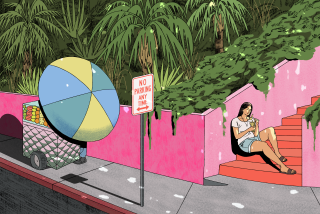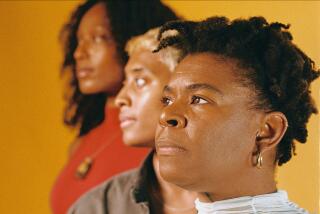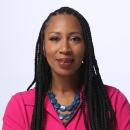No bullets or body counts: How ‘Insecure’ creator Issa Rae portrays the sexy side of South L.A.

Issa Rae, creator and star of the HBO comedy series “Insecure,” rides through Inglewood and other areas in South Los Angeles featured in the show. (Genaro Molina / Los Angeles Times)
- Share via
Actress and writer Issa Rae grew up in South Los Angeles, but in a different world from the bullets and body counts that Hollywood portrayed.
Back in the 1990s, gang violence exploded and the Southside burned during the days of rioting. Popular culture reflected the tough times through movies such as “Boyz N the Hood” and “Menace II Society.”
Rae’s South L.A. was something else. Home was the tony View Park neighborhood, known to some as the “black Beverly Hills,” and her father owns a dental practice in Inglewood. When it came time to write a show for HBO, she said she wanted to create something that displayed a different side of South L.A. while also staying true to her experiences.
What she came up with was “Insecure,” in which Rae navigated life as a twentysomething professional in South L.A. The show brought a level of nuance to its portrayal of black life in a much-maligned neighborhood.
“I never get to see [South L.A.] not displayed as the ‘scary hood’ and that’s not the experience that I know,” Rae said. “I just wanted to make it feel sexy in a way that other places in L.A. are allowed that. Black and Latino places are not afforded that same luxury.”
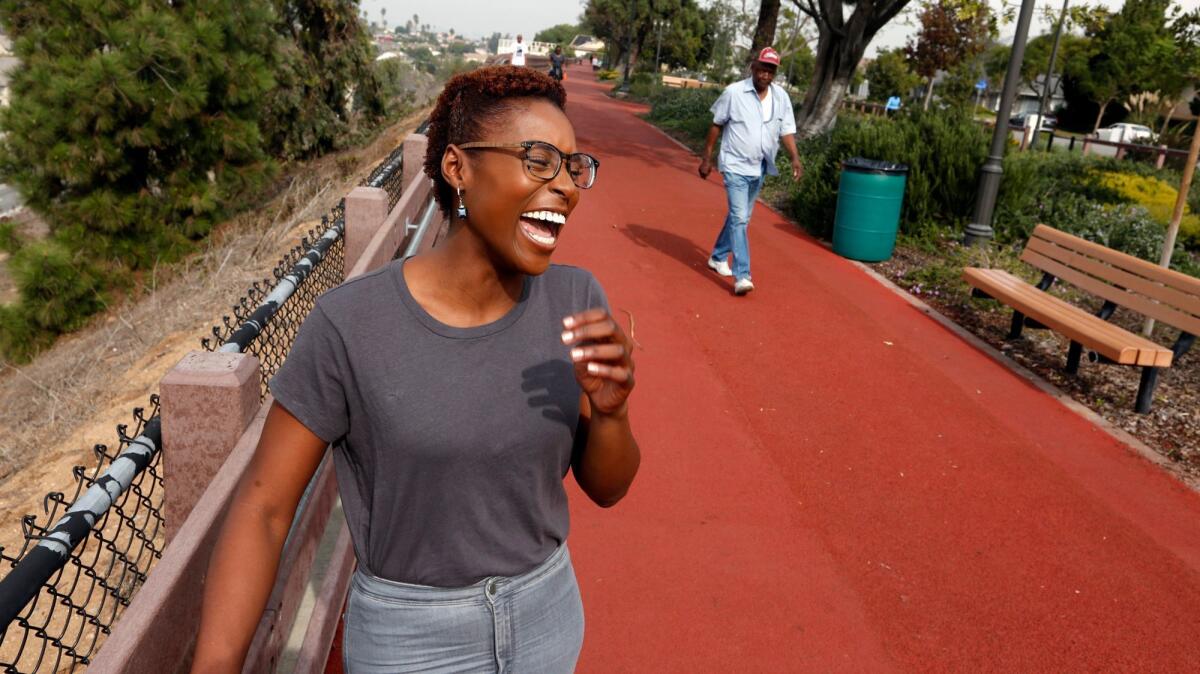
“Insecure” arrives as black L.A. is changing — and Rae wants to share it with the world.
“The way that Woody Allen depicts New York, I want to be like Woody Allen for L.A., and South L.A. specifically,” Rae said. “I love the culture and I feel like there are so many different pockets of riches that I want to depict for black and Latino cultures specifically just because that’s not really acknowledged in the same way.”
The region’s hot housing market is rapidly gentrifying the once-struggling area, particularly around USC and Southwest L.A.
Two light rails — the Expo Line to Santa Monica and the Crenshaw Line now under construction to Los Angeles International Airport — are opening up the Southside to the rest of L.A.
Even developers are beginning to explore the area, with big retail and residential projects slated south of the 10 Freeway near downtown and at the base of Baldwin Hills off La Cienega Boulevard.
Rae is the first to say the South L.A. portrayed in her show reflects a portion of the entire black experience. But she believes it was a side that needed to be explored.
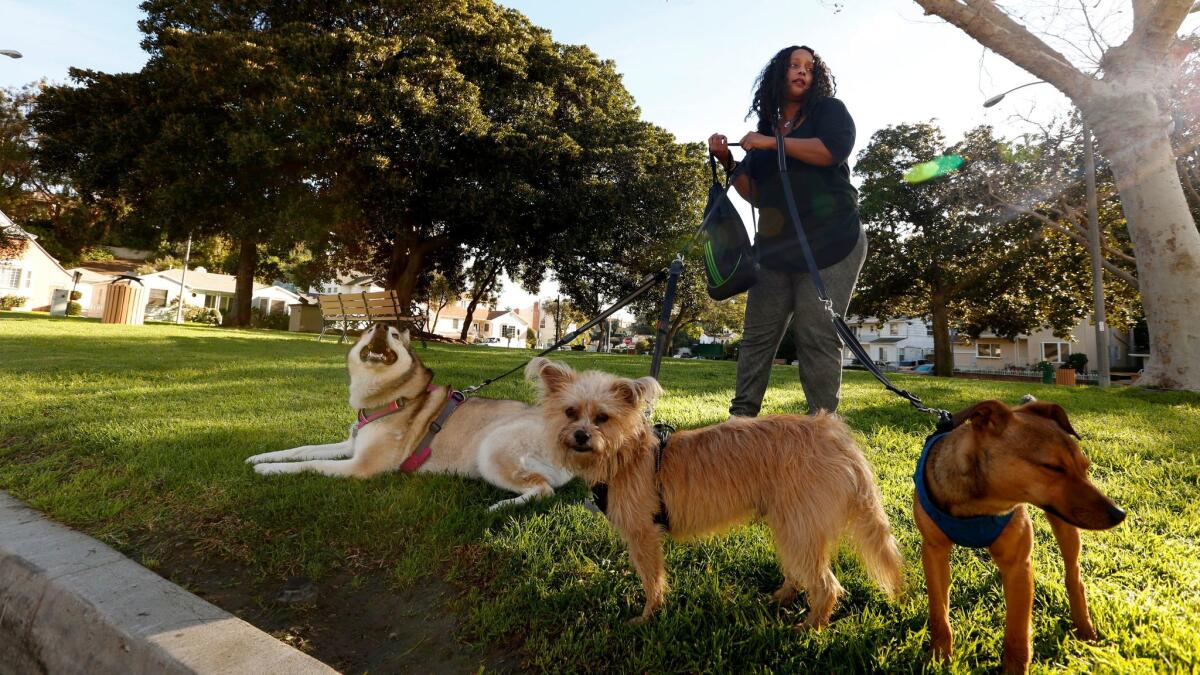
South L.A.’s poor reputation had become so inescapable despite some strides that, a decade ago, residents moved to change the name of the region. They petitioned to remove references to the name South Central because they felt that it had become culturally tainted.
A generation after the 1992 riots brought South L.A. to national prominence, perception lags behind the reality of quickly changing neighborhoods.
Crime, including some committed by gangs, is down significantly from the height of the late 1980s through mid-1990s. And the demographics have shifted. Many blacks moved to Riverside, Lancaster and San Bernardino. Latinos now make up a majority of residents, and more whites have moved into some neighborhoods, including View Park.
“The Crenshaw I remember growing up was very, very black,” she said during a recent ride through South L.A. “I remember cruising it to try to find the hood guys with my friends.”
In 1990, half of South L.A. residents were black, 45% Latino and 2.5% white. A generation later, blacks make up 28% of residents, Latinos 65% and whites 3%.
“Insecure” portrays life in South L.A. beyond gang members, guns, killings and tragedy.
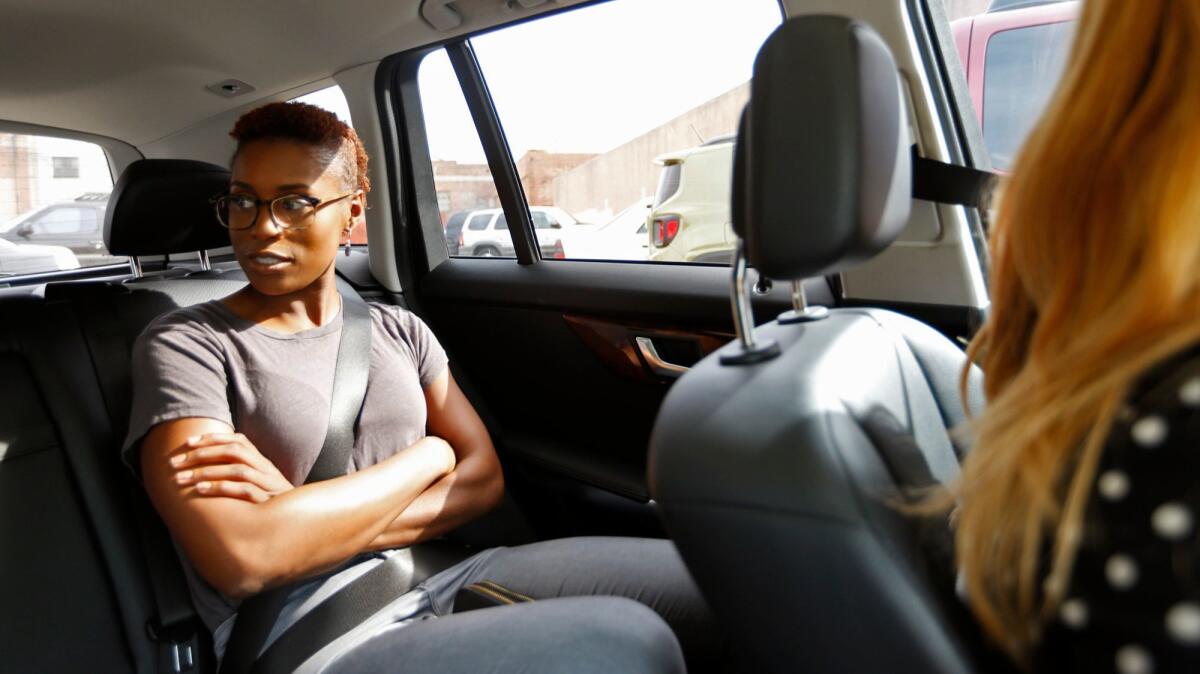
“This is the modern iteration of black struggle – struggling to figure out who am I, where are we,” said Erin Aubry Kaplan, an Inglewood writer.
Kaplan and others acknowledge that South L.A. still faces serious problems. In Watts and other pockets of black Los Angeles, crime and poverty remain a constant problem. But there is light in the neighborhood, and that is not something usually captured on the big or small screen.
“We’re not all shooting each other and killing each other,” said 73-year-old Yvonne Divans-Hutchinson, a longtime Leimert Park resident. “It’s important to show that. People want to believe the stereotype.”
For some, who have grown used to seeing their neighborhood in gritty crime films such as “Training Day,” they say they are proud that Hollywood is now showcasing local gems such as the Maverick’s Flat nightclub in Leimert Park — the so-called Apollo Theater of the West Coast — and verdant neighborhoods including Baldwin Hills and Windsor Hills.
Karen Dacres loves to talk to her New York friends about the home she settled into five years ago.
But the stories she tells about her South L.A neighborhood often surprise her audience. No matter how pretty the Spanish Colonial, Mediterranean Revival and Mid-century Modern homes, how neatly manicured the lawns, it’s been hard for South L.A. to overcome its reputation.
That’s why Dacres says she’s grateful for “Insecure.”
“Most shows show crime, drugs and are not reflective of our lives as we live it every day,” Dacres, 47, who lives in View Park. “It’s nice to see it not in the ‘Boyz N the Hood’-type movie or there’s a shootout on Slauson [Avenue]. You are seeing the community in a positive, normal everyday way.”
Darnell Hunt, professor of sociology and director of the Ralph J. Bunche Center for African American Studies at UCLA, said “Insecure” gives people an artistic peek beyond their well-trodden stereotypes.
“A show like ‘Insecure’ is a good antidote to the easier stereotypes that want to depict the inner city as a war zone,” he said. “The black community is not monolith.”
The South L.A. on display in the show is a largely more affluent part of the region, but it gives a nod to the gang culture that exists. Its first episode opens with bright, color-rich images of iconic landmarks flashing across the screen — the massive doughnut sculpture that sits atop Randy’s Donuts in Inglewood, the Vision Theatre’s art deco facade in Leimert Park and beauty supply stores that line Crenshaw Boulevard — as Kendrick Lamar’s hit song “Alright” plays.
In another episode, Rae’s on-screen character — also named Issa — is in a meeting brainstorming locations for a work fundraiser with colleagues. She’s the only black person at a nonprofit called We Got Y’all, which serves at-risk children. Her white counterparts suggest Malibu. Rae proposes Inglewood or Baldwin Hills, saying: “It just would be great to show the kids that there’s beauty in their own backyard.”
That statement encapsulates what the 32-year-old show creator has been trying to do for her hometown.
When Rae first pitched the show, one director suggested she move it to New York. As filming got underway, she had to push to shoot in South L.A. neighborhoods. She was asked to film the fundraiser scenes in the San Fernando Valley for convenience. She refused.
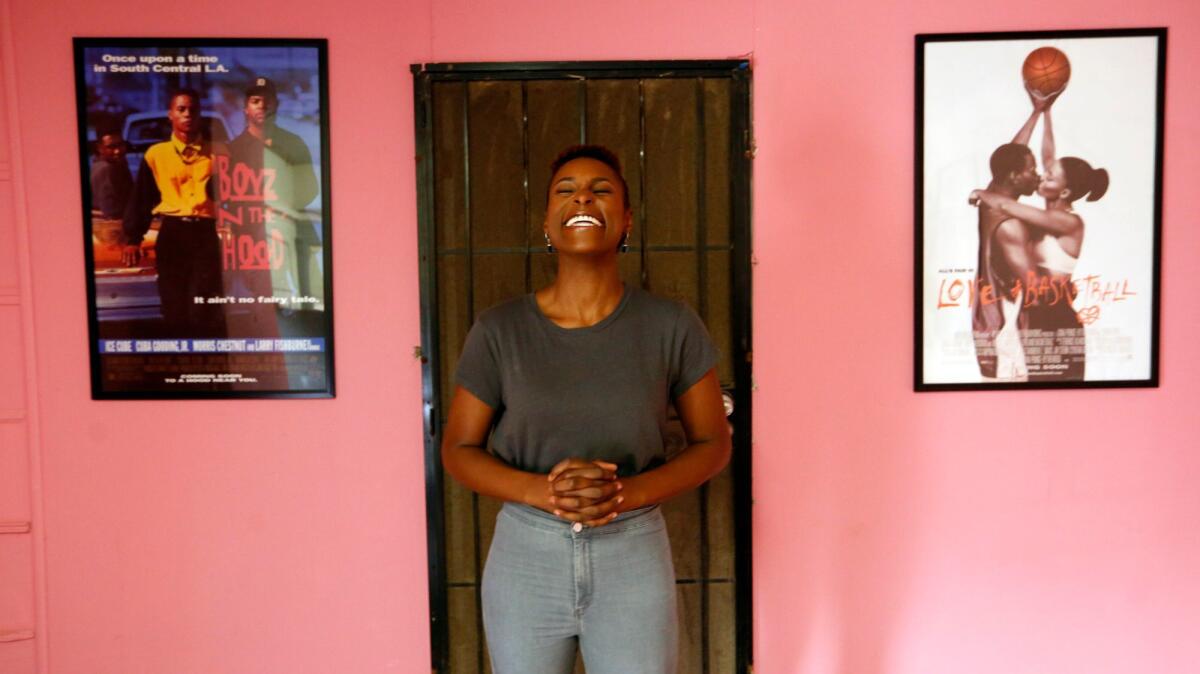
“There’s just something magical about being in the area, supporting the community and just the essence of the neighborhood that we’re bringing to life,” she said. “I don’t want to fake any parts of the show. I don’t want to fake Inglewood. I don’t want to fake Leimert because these places exist and they really get used.”
The last L.A-based film that Rae remembers that accurately depicted a black-centered neighborhood of wealth was “Love & Basketball.” The movie’s poster is framed in the entrance of her Inglewood office as inspiration. To the left, Cuba Gooding Jr., Ice Cube and Morris Chestnut peer out of the poster for the acclaimed Boyz N the Hood — reminding Rae of where it all started.
To the right, almost to signal the future of South L.A.’s cinematic history, is the headshot of Rae drowned in a pink haze that is plastered on billboards around the city advertising the hit show. It has been renewed for a second season and earned Rae a Golden Globe nomination.
For more California breaking news, follow @AngelJennings. She can also be reached at [email protected].
ALSO
Huge rallies may signal an emerging anti-Trump movement. But sustaining unity could prove difficult
In Palm Springs, a special sadness in the LGBT community for the Obama era’s end
As California goes from drought to deluge, a dangerous old foe returns: mudslides
More to Read
Sign up for Essential California
The most important California stories and recommendations in your inbox every morning.
You may occasionally receive promotional content from the Los Angeles Times.

